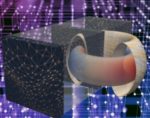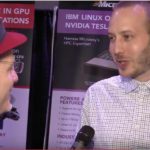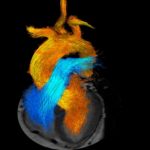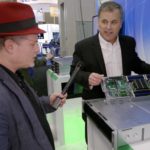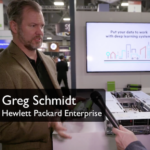Researchers are using Deep Learning techniques on DOE supercomputers to help develop fusion energy. “Unlike classical machine learning methods, FRNN—the first deep learning code applied to disruption prediction—can analyze data with many different variables such as the plasma current, temperature, and density. Using a combination of recurrent neural networks and convolutional neural networks, FRNN observes thousands of experimental runs called “shots,” both those that led to disruptions and those that did not, to determine which factors cause disruptions.”
NVIDIA P100 GPUs come to Google Cloud Platform
Today the good folks at the Google Compute Platform announced the availability of NVIDIA GPUs in the Cloud for multiple geographies. Cloud GPUs can accelerate workloads such as machine learning training and inference, geophysical data processing, simulation, seismic analysis, molecular modeling, genomics and many more high performance compute use cases. “Today, we’re happy to make some massively parallel announcements for Cloud GPUs. First, Google Cloud Platform (GCP) gets another performance boost with the public launch of NVIDIA P100 GPUs in beta.
Microway GPU Systems for HPC & Deep Learning at GTC 2017
In this video from the 2017 GPU Technology Conference, Eliot Eshelman from Microway describes the company’s GPU expertise and wide range of accelerated HPC products. “Since 1982, Microway has delivered high performance computing solutions. We have in-depth experience with demanding Linux-based scientific/engineering applications. Leveraging NVIDIA’s latest Tesla GPUs, our team will design a solution for your specific applications. Our experts ensure your system is delivered fully tested and ready to run!”
Video: Computational Fluid Dynamics for Surgical Planning
“The current versions of the codes use MPI and depend on finer and finer meshes for higher accuracy which are computationally demanding. To overcome the demands, the team has gained access to their state-of-the-art cluster equipped with POWER CPUs and Tesla P100 GPUs — and turning to OpenACC and machine learning to accelerate their science. This has allowed them to spend the least resources on programming, and effectively utilize available compute resources.”
Overview of the HGX-1 AI Accelerator Chassis
“The Project Olympus hyperscale GPU accelerator chassis for AI, also referred to as HGX-1, is designed to support eight of the latest “Pascal” generation NVIDIA GPUs and NVIDIA’s NVLink high speed multi-GPU interconnect technology, and provides high bandwidth interconnectivity for up to 32 GPUs by connecting four HGX-1 together. The HGX-1 AI accelerator provides extreme performance scalability to meet the demanding requirements of fast growing machine learning workloads, and its unique design allows it to be easily adopted into existing datacenters around the world.”
Nvidia to Power Fujitsu’s New Deep Learning System at RIKEN
Today Fujitsu announced that it has received RIKEN’s order for the “Deep learning system,” one of the largest supercomputers in Japan specializing in AI research. “NVIDIA DGX-1, the world’s first all-in-one AI supercomputer, is designed to meet the enormous computational needs of AI researchers,” said Jim McHugh, VP & GM at Nvidia. “Powered by 24 DGX-1s, the RIKEN Center for Advanced Intelligence Project’s system will be the most powerful DGX-1 customer installation in the world. Its breakthrough performance will dramatically speed up deep learning research in Japan, and become a platform for solving complex problems in healthcare, manufacturing and public safety.”
Apply Now for Summer of HPC 2017 in Barcelona
“The PRACE Summer of HPC is an outreach and training program that offers summer placements at top High Performance Computing centers across Europe to late-stage undergraduates and early-stage postgraduate students. Up to twenty top applicants from across Europe will be selected to participate. Participants will spend two months working on projects related to PRACE technical or industrial work and produce a report and a visualization or video of their results.”
Supermicro Showcases Versatile HPC Solutions at SC16
In this video from SC16, Don Clegg from Supermicro describes the company’s broad range of HPC solutions. “Innovation is at the core of Supermicro product development and benefits the HPC community with first-to-market integration of advanced technology such as our 1U with four and 4U with eight Pascal P100 SXM2 GPUs or 4U with ten PCI-e GPU systems, hot-swap U.2 NVMe, upcoming fabric technologies like Red Rock Canyon and PCI-E switches, as well as new architecture designs like our new high-density BigTwin system design.”
GPUs & Deep Learning in the Spotlight for Nvidia at SC16
In this video from SC16, Roy Kim from Nvidia describes how the company is bringing in a new age of AI with accelerated computing for Deep Learning applications. “Deep learning is the fastest-growing field in artificial intelligence, helping computers make sense of infinite amounts of data in the form of images, sound, and text. Using multiple levels of neural networks, computers now have the capacity to see, learn, and react to complex situations as well or better than humans. This is leading to a profoundly different way of thinking about your data, your technology, and the products and services you deliver.”
HPE Apollo 6500 for Deep Learning
“With up to eight high performance NVIDIA GPUs designed for maximum transfer bandwidth, the HPE Apollo 6500 is purpose-built for HPC and deep learning applications. Its high ratio of GPUs to CPUs, dense 4U form factor and efficient design enable organizations to run deep learning recommendation algorithms faster and more efficiently, significantly reducing model training time and accelerating the delivery of real-time results, all while controlling costs.”

